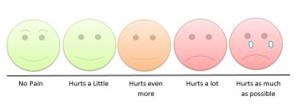
Here we are in the middle of 2022, and I have to admit that every day I am in the office I see incredible things. At this point I am so used to hearing that our patients feel better, headaches are down and they are sleeping. This has become the norm. But every now and then it just does not work that way, admittedly, around 10% of the time I cannot help that person. And sometimes that is just because they need surgery to fix the problem. The more frustrating case is when I meet a new patient and the MRI shows severe degeneration and yet they feel no pain at all!
When there is severe disc displacement and the condyles (top part of the jaws) are eroding, it would only seem logical that there would be pain. Doesn’t that make sense? What I have learned over the years is the discs have been out of place for a very long time and the condyles are eroding due to compression in the sockets.
The body has set in the process of erosion to prevent the condyle from jamming hard into the socket. Think of it this way, most of the new patients I meet really should have had their teeth raised taller when they did braces so that the condyles would not jam up into the joints so hard. Yet, most people never had orthodontic work done in that fashion. The goal was to have their teeth made straighter to look good, a cosmetic case only. And now, years later, the shortness of the teeth has caused the condyles to jam up into the sockets, thus displacing the discs out of the joints. This is what I see almost every day of the week!
The way our body works is that it will always try to protect us from harm. Just like if you get a bacterial infection, the body fights back with chemicals to kill the bacteria. Well, when our body senses the condyles are too high up in the socket and are damaging the discs, sometimes the body will begin to erode away that jammed-up condyle to avoid pain. It’s really quite simple actually- our body is trying to help us. However, this so-called ‘help’ is not what needs to be done. What we really need to do is to make the back teeth taller to open up the joint space and reduce the impact of the condyle on the socket. I hope this makes sense. It seems to work quite well in some patients, but not so much with others. This is why we are human beings, there are many variables at play here. With certain patients, i.e., those with autoimmune disorders, for example, their inflammation levels are already quite high so it is more likely they will hurt due to slipped discs and degenerating condyles. With other patients who have little to no existing inflammation, they are less likely to feel the pain of their situation.
As you can imagine, some days it is difficult to figure out why one patient is hurting and the other just simply does not! Maybe this is what makes us human beings! Please give us a call if you have any concerns about your jaw health!
